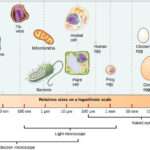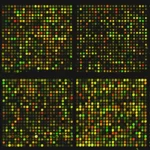
7 Cutting-Edge Bioinformatics Techniques Impacting Genetic Research
November 1, 2023I. Introduction
A. The Significance of Bioinformatics in Genetic Research
Bioinformatics has emerged as a critical field in genetic research, providing the computational power and analytical tools necessary to make sense of vast amounts of genetic data. This intersection of biology and informatics has propelled our understanding of the genetic foundations of life.
B. Overview of Groundbreaking Techniques in the Field
The field has seen the development of groundbreaking techniques such as next-generation sequencing, CRISPR-Cas9 gene editing, and whole-genome association studies, each transforming the way researchers approach genetic investigations.
C. The Impact of These Techniques on Current and Future Genetic Studies
These bioinformatics techniques have significantly impacted genetic research, making it possible to identify genetic variants linked to diseases, understand evolutionary biology at a granular level, and pave the way for personalized medicine. Their continued evolution will undoubtedly shape the trajectory of future genetic studies.
II. Next-Generation Sequencing (NGS) Analytics
A. The Evolution and Importance of NGS in Genomics
Next-Generation Sequencing (NGS) represents a monumental leap in genomics, providing high-throughput sequencing that allows for the entire genome to be sequenced quickly and cost-effectively. This has revolutionized genomics by enabling a comprehensive analysis of genetic variations and mutations.
B. Bioinformatics Tools for NGS Data Analysis
Bioinformatics tools essential for NGS data analysis include sequence aligners like BWA and Bowtie, variant callers such as GATK, and visualization tools like Integrative Genomics Viewer (IGV). These tools facilitate the processing and interpretation of the vast datasets generated by NGS technologies.
C. Case Studies Highlighting the Transformational Role of NGS
Case studies, such as the use of NGS in identifying the genetic basis of rare diseases, in tracking the transmission paths of infectious diseases like COVID-19, and in cancer genomics for personalized treatment strategies, underscore the transformative impact NGS has had on medical research and diagnostics.
III. CRISPR-Cas9 Data Interpretation
A. An Introduction to CRISPR-Cas9 and Its Revolutionary Impact
CRISPR-Cas9 is a groundbreaking gene-editing technology that allows for precise, directed changes to genomic DNA. It has revolutionized the fields of genetics and molecular biology, with potential applications ranging from gene therapy to agriculture.
B. Bioinformatics Approaches to Predict CRISPR Outcomes
Bioinformatics approaches are vital in predicting the outcomes of CRISPR-Cas9 gene editing. These include software tools that model on-target efficiency and off-target effects, helping researchers design CRISPR experiments and interpret their results.
C. Real-World Applications and Ethical Considerations
CRISPR-Cas9 has been applied in various real-world contexts, including the development of disease-resistant crops and the potential treatment of genetic disorders. However, it also raises ethical questions regarding genome editing in humans, necessitating a thoughtful approach to its application.
IV. Single-Cell Genomics
A. The Rise of Single-Cell Analysis in Genetic Research
Single-cell analysis represents a significant advance in genetic research, allowing scientists to examine the genomic, transcriptomic, and epigenomic information from individual cells, providing a more detailed picture of cellular diversity and function.
B. Bioinformatics Methods for Single-Cell Data Interpretation
Bioinformatics methods for single-cell data include specialized algorithms for cell clustering, differential expression analysis, and lineage tracing. Tools like Seurat and Scanpy are widely used for such analyses.
C. How Single-Cell Genomics is Uncovering New Genetic Insights
Single-cell genomics has led to new insights into the complexity of tissue organization, the mechanics of development, and the progression of diseases like cancer, by revealing heterogeneity that is obscured in bulk-cell analyses.
V. Machine Learning in Genomic Prediction
A. The Intersection of Artificial Intelligence and Genetic Research
Artificial intelligence, particularly machine learning (ML), is increasingly intersecting with genetic research. It provides powerful tools to analyze and predict complex patterns within genetic data that may be too subtle or complex for traditional analysis.
B. Machine Learning Algorithms for Genetic Pattern Recognition
Machine learning algorithms, such as neural networks, decision trees, and support vector machines, are being employed for pattern recognition within genetic datasets. These algorithms can identify potential genetic markers of disease, predict phenotypic outcomes, and uncover genetic interactions.
C. Predictive Models and Their Contribution to Personalized Medicine
Predictive models built using ML are contributing significantly to the advancement of personalized medicine. They can predict an individual’s susceptibility to certain diseases, forecast response to various treatments, and guide the development of targeted therapies.
VI. 3D Genomic Modeling
A. Understanding Spatial Genome Organization Through Bioinformatics
Bioinformatics is crucial for exploring the three-dimensional organization of the genome within the nucleus, which influences gene expression and cellular function. Understanding this spatial arrangement is essential for fully comprehending genomic regulation and its implications for health and disease.
B. Tools and Techniques for Constructing 3D Genomic Models
Tools and techniques for 3D genomic modeling include chromosome conformation capture (such as Hi-C) and advanced computational models that predict the folding patterns of DNA. Software like 3D-DNA and Chrom3D are used to construct and visualize 3D models of genomic architecture.
C. Applications of 3D Modeling in Understanding Chromosomal Structures
3D genomic models help in understanding the functional implications of chromosomal structures, such as topologically associating domains (TADs) and chromatin loops. These models have applications in studying the mechanisms of gene regulation, the effects of chromosomal rearrangements in diseases, and the evolution of genome organization.
VII. Integration of Multi-Omics Data
A. Comprehensive Bioinformatics Analysis Across Omics Layers
The integration of multi-omics data involves comprehensive bioinformatics analysis across various ‘omics’ layers—such as genomics, transcriptomics, proteomics, and metabolomics—to build a holistic view of biological processes and systems.
B. Integrative Tools for Multi-Omics Data
Integrative bioinformatics tools, like multi-omics factor analysis (MOFA) and joint latent variable models, are designed to handle the complexity and heterogeneity of data from different omic layers, facilitating the discovery of biological insights that would not be apparent from single-omics studies.
C. Insights Gained from Multi-Omics and Their Research Implications
Multi-omics integration can provide deep insights into the molecular basis of diseases, the interactions between various cellular components, and the responses of organisms to different environmental conditions. These insights have profound implications for research into complex diseases, systems biology, and the development of targeted therapies.
VIII. Conclusion
A. The Transformative Effect of These Techniques on Genetic Research
The suite of techniques described has had a transformative effect on genetic research, vastly expanding our capacity to decode complex genetic information and understand the underlying biological processes that define living organisms.
B. Future Directions and Potential Advancements in Bioinformatics
The future of bioinformatics promises further advancements, with the potential for more sophisticated machine learning models, greater integration of multi-omics data, and enhanced 3D genomic modeling to drive forward our understanding of genetics.
C. The Ongoing Need for Innovation in Genetic Data Analysis
As the volume and complexity of genetic data continue to grow, there is an ongoing need for innovation in data analysis. The genetic research community must continually develop new bioinformatics tools and methods to keep pace with the rapid advancements in data generation and to unlock the full potential of genetic studies.
IX. Call to Action
A. For Researchers: To Adopt and Master These Cutting-Edge Techniques
Researchers in the field of genetics are encouraged to adopt and master these cutting-edge bioinformatics techniques, as they are essential for driving forward the boundaries of what is scientifically possible in genetic research.
B. For Institutions: To Support Training in Advanced Bioinformatics
Educational and research institutions should provide robust training programs in advanced bioinformatics to equip the next generation of scientists with the necessary skills to exploit the full potential of these transformative technologies.
C. For Funding Bodies: To Invest in Bioinformatics-Driven Research
Funding bodies and agencies are urged to prioritize and invest in bioinformatics-driven research, recognizing its critical role in enabling significant scientific discoveries and its potential to provide solutions to some of the most pressing health and environmental challenges.















